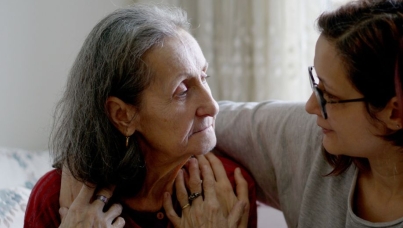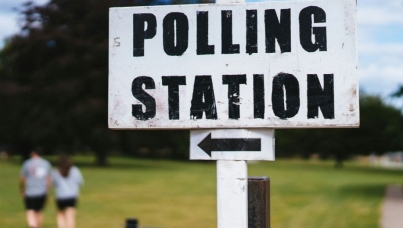Local/London Mayor/Romsey Elections Explained
So, no real surprises in Thursday's local elections, though most of the government's worst fears were fulfilled. Ken is Mayor, the Tories are back in business in local government. More surprising, the Liberal Democrats gained their first parliamentary seat under Charles Kennedy's leadership in the Romsey by-election.
The turnout for Mayor was abominably low - at 36% only just higher than in the London Borough elections two years ago (which were run in tandem with the referendum on setting up the Mayor and Assembly in the first place). This compares with 50% who in our poll for Carlton's London News Network, conducted on the Tuesday and Wednesday, said they were "certain to vote". This seems to confirm that the voters treated this as a local election rather than as a higher-level one (in Parliamentary elections, "certain to vote" is normally a very accurate indicator of turnout, in local government elections almost always a considerable overestimate). But in any case, it was always likely that the poll would produce something of an overestimate both of turnout and of Ken Livingstone's vote, since unlike the major parties he did not have a large organised team of helpers and canvassers across the capital to turn out the vote on the day. It is, of course, highly unusual for the leading candidate in a British election to be in this position, and beyond being fairly sure that there would be an effect we had no way of gauging how big it was likely to be. (A number of academic teams using various methods have during the last couple of general elections investigated, and proved the existence of, the effect of local campaigning vigour on the size of a party's vote; but, of course, since strength of campaigning tends almost always to be related to a party's chances in the constituency as well as to national party morale, the research offered us few clues as to what would happen in the case of the most popular candidate having the least well-manned campaign.)
Ken's support was at 51% of Londoners (and 53% of those "certain" or "very likely" to vote) in the last ICM/Evening Standard poll on Tuesday and Wednesday the previous week. It slipped to 44% of Londoners and 46% of those "certain to vote" in the MORI/London News Network poll on the Tuesday and Wednesday before polling day - probably real swing, voters actually changing their opinions. Then in the ICM/BBC survey on polling day, with some respondents who had already voted and others with a better but still imperfect chance of predicting their likelihood of doing so as the day wore on, the prediction was 41%. In the end he secured 39.0% of the first preferences of those who reached the polling stations - but probably quite a disproportionately high share among those who thought of voting, or almost voted, or intended to vote but forgot. The ICM data, reported in the Guardian, also confirms differential turnout depressing the Labour assembly vote, as well as last-minute switching by Labour supporters to the Liberal Democrats and Greens.
That 36% turnout, of course, is after the government conceded a free mailshot to the Mayoral candidates, which they had initially intended not to provide, after the 'early voting' innovation, directly aimed at improving turnout, and after an expensive publicly-funded advertising campaign to emphasise the elections' importance. What would the turnout have been otherwise?
What does it mean politically? It was obviously a dreadful night of results for Labour - nearly six hundred council seats lost across England, beaten by the Tories in the London Assembly constituencies and humiliated with third place (almost fourth) for Mayor and a lost deposit at Romsey. They must draw what consolation they can from the knowledge that, disappointing though their performance was, it would probably still have left them with a narrow majority in a general election. Furthermore, Labour rarely does as well in local elections as in Westminster elections, since part of their support switches to the Liberal Democrats at council level.
It is more of a mixed picture for the Tories: nation-wide council gains, which are not only a substantial success in themselves but a welcome boost for grass-roots morale and with the longer-term effect of strengthening the party machine with extra elected manpower in advance of next year's elections. They will be happy, too, with a respectable second place for Steven Norris (and the sight of the Daily Mirror front page instructing its readers to "Vote Tory" for the first time since 1929!).
But the defeat at Romsey is, in truth, bad enough to offset all of this. Of all the elections held on Thursday, the by-election was the only one with a half-respectable turnout (55%), and it confirmed the message of the last two by-elections with reasonable turnouts (at Eddisbury last year, and at Ayr in the Holyrood by-election a couple of months ago) - as the polls are also suggesting, the Tories are moving nowhere; when the turnout is reasonable their share of the vote is static or worse, and they are winning or losing seats only through shifts in votes between the other parties.
Worse, it indicated that there is still enough anti-Tory feeling to fuel tactical voting. It has been a widespread assumption that anti-Tory tactical voting reached a peak in 1997, and that the party can expect to capture seats back - especially from the Liberal Democrats but also from Labour - purely on the basis of some non-Tory voters returning to their natural home, before any other considerations of swing or turnout come into the picture. On the evidence of Romsey, the opposite is the case, and the Tories will lose extra seats where there is still a third-party vote to squeeze. There are 24 Conservative seats where the Labour vote in 1997 was more than double the margin by which the Conservative beat the Liberal Democrat, all far easier gains than Romsey; and, if it works the other way, 36 where the Conservative margin over Labour is less than half the Liberal Democrat vote.
Some Tories have pointed to nearby Christchurch, where they lost an even safer seat to the Liberal Democrats in a 1993 by-election, only to regain it comfortably at the 1997 election. They didn't, on the other hand, regain Eastleigh - next door to Romsey - which the Lib Dems took in a 1994 by-election. But both of those were lost while the Tories were in government. The better comparison is to note that the Tories last lost a by-election while in opposition in 1967, at the Roxburgh, Selkirk and Peebles by-election - and that seat has been Liberal ever since, its captor serving a full career in Parliament, rising to the leadership of his party and on retirement to the Lords successfully handing the seat on to his Liberal Democrat successor.



